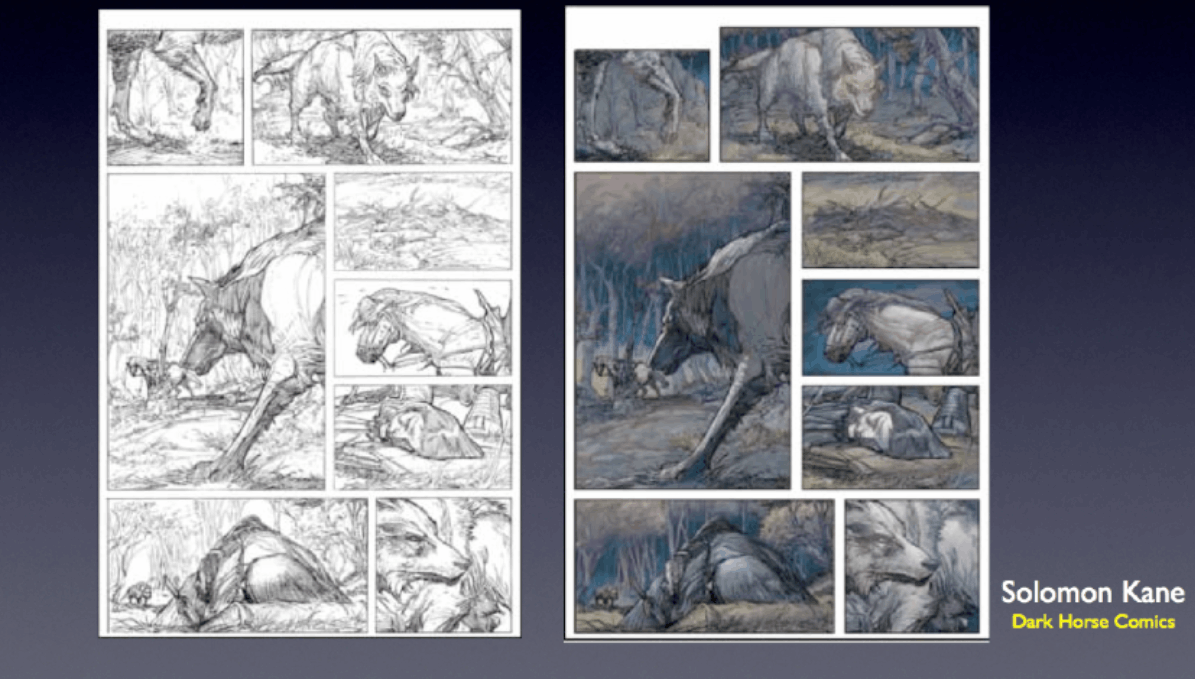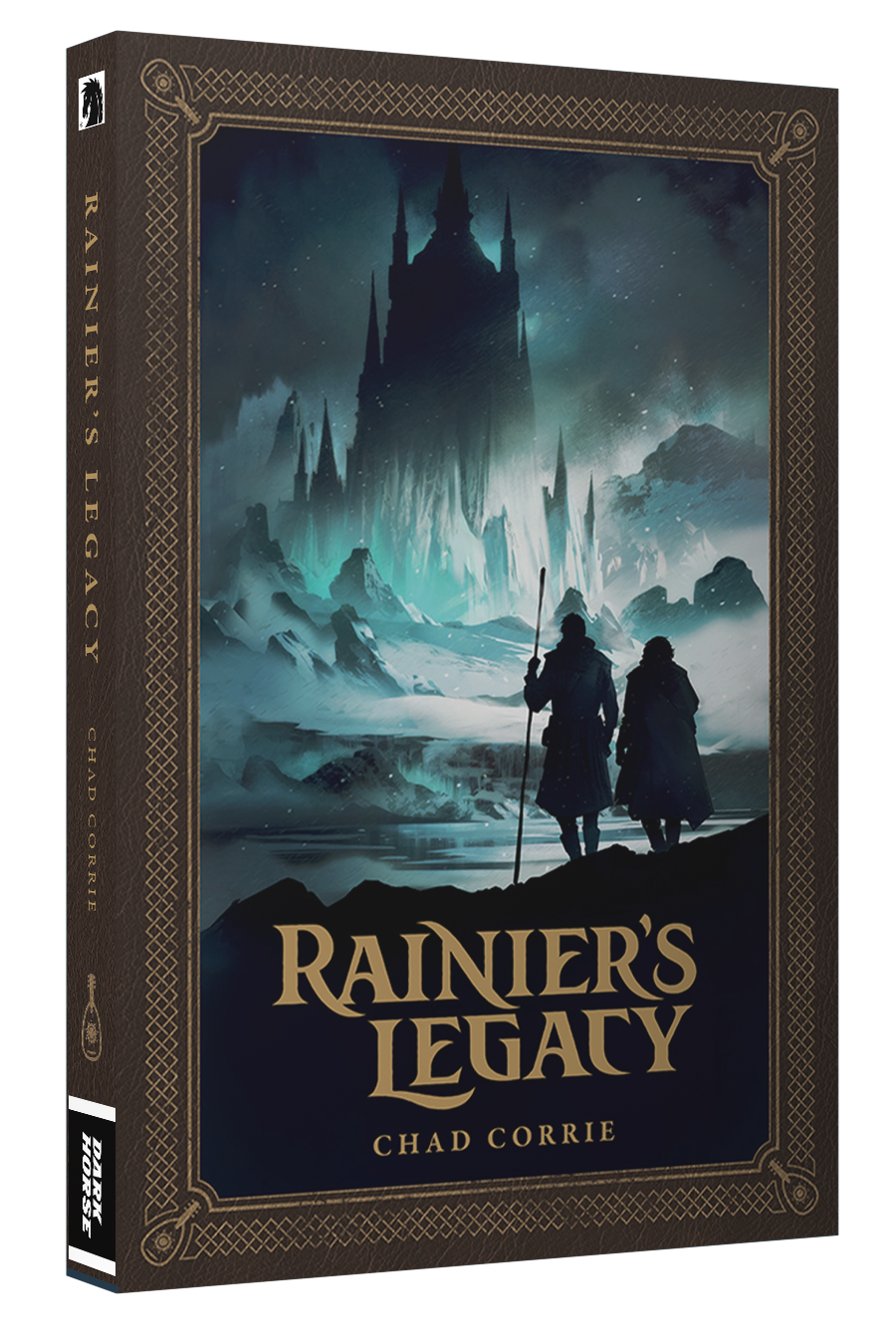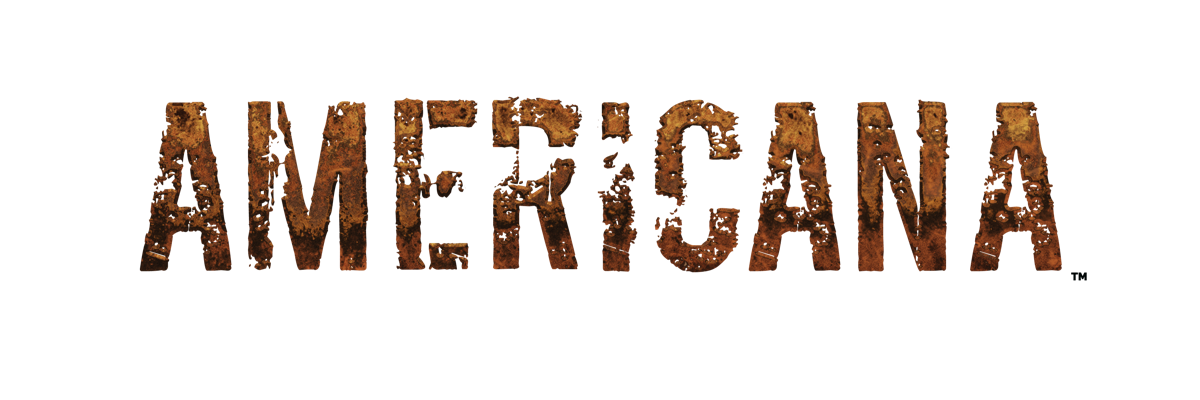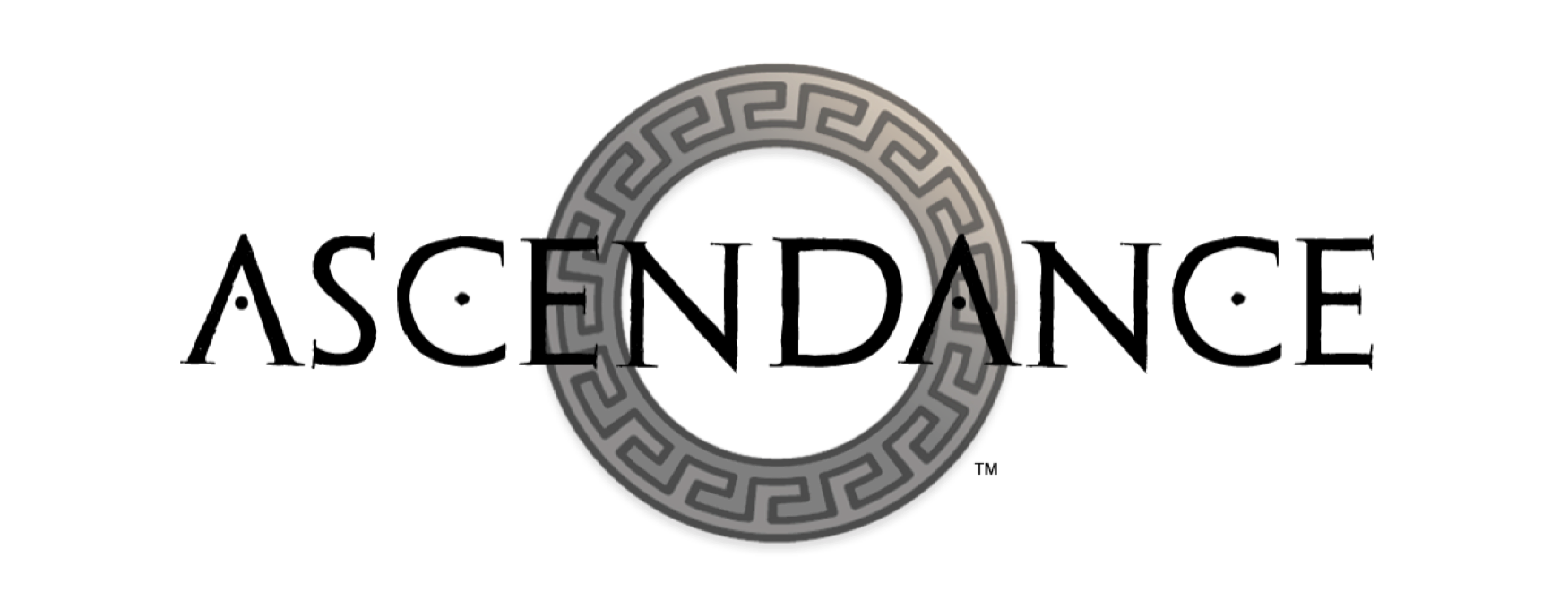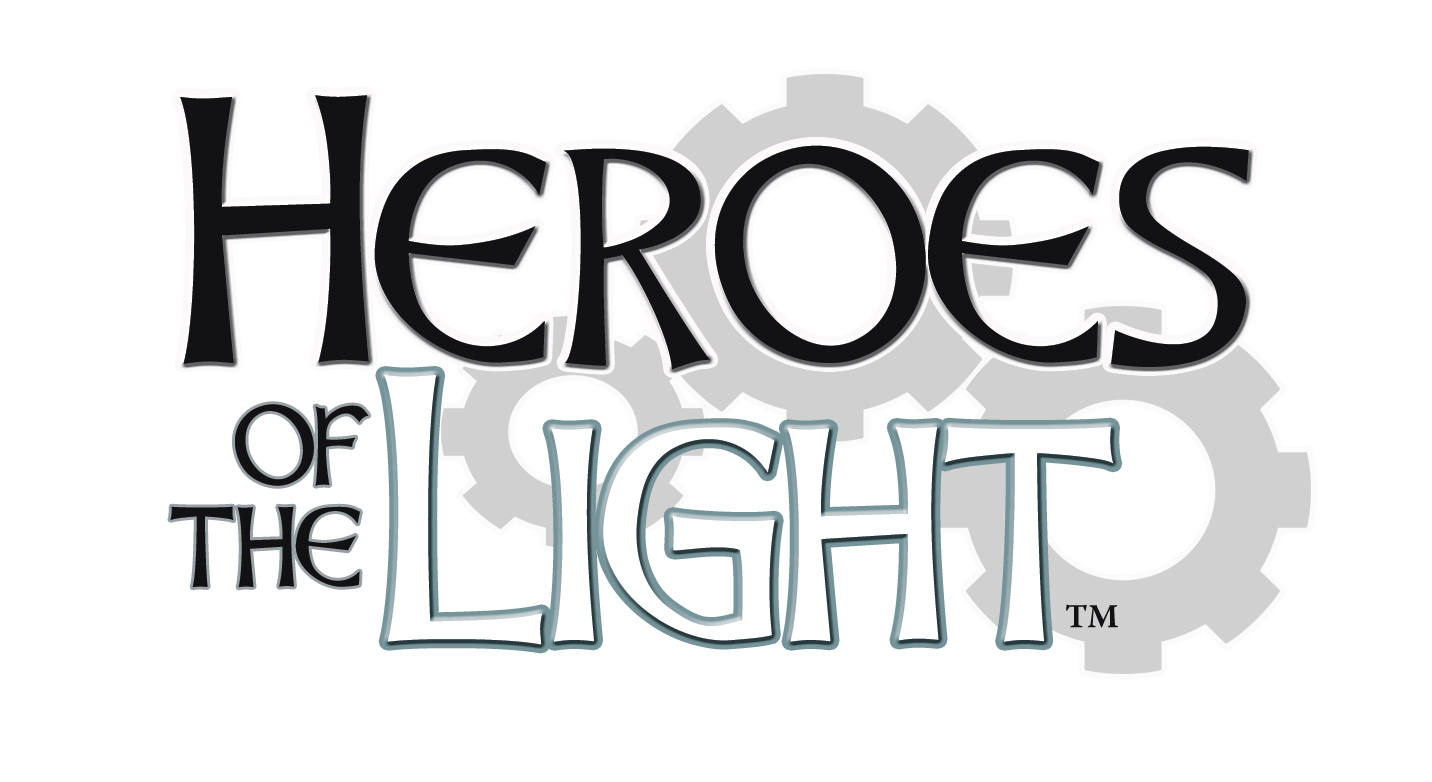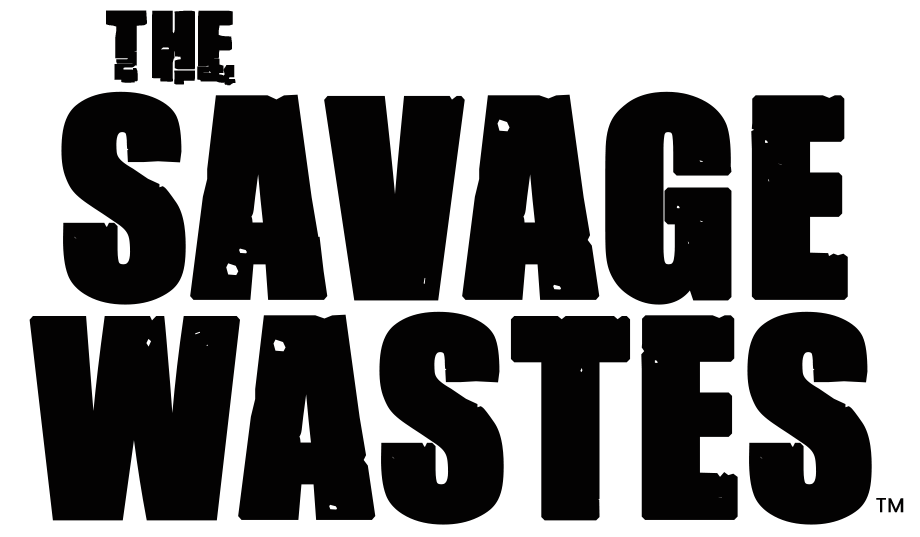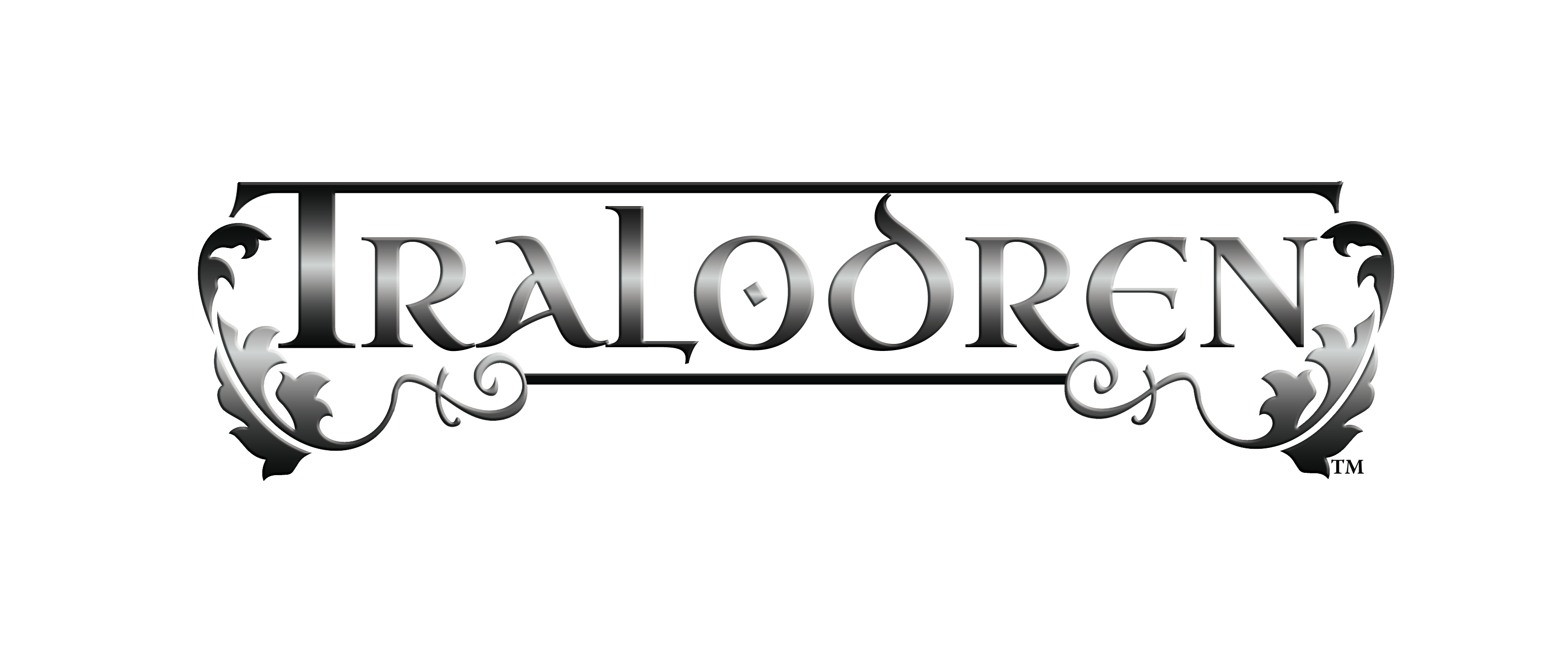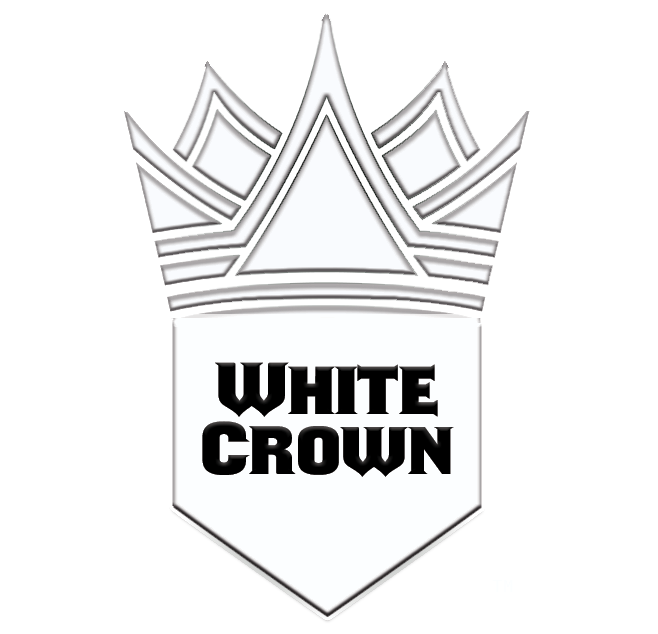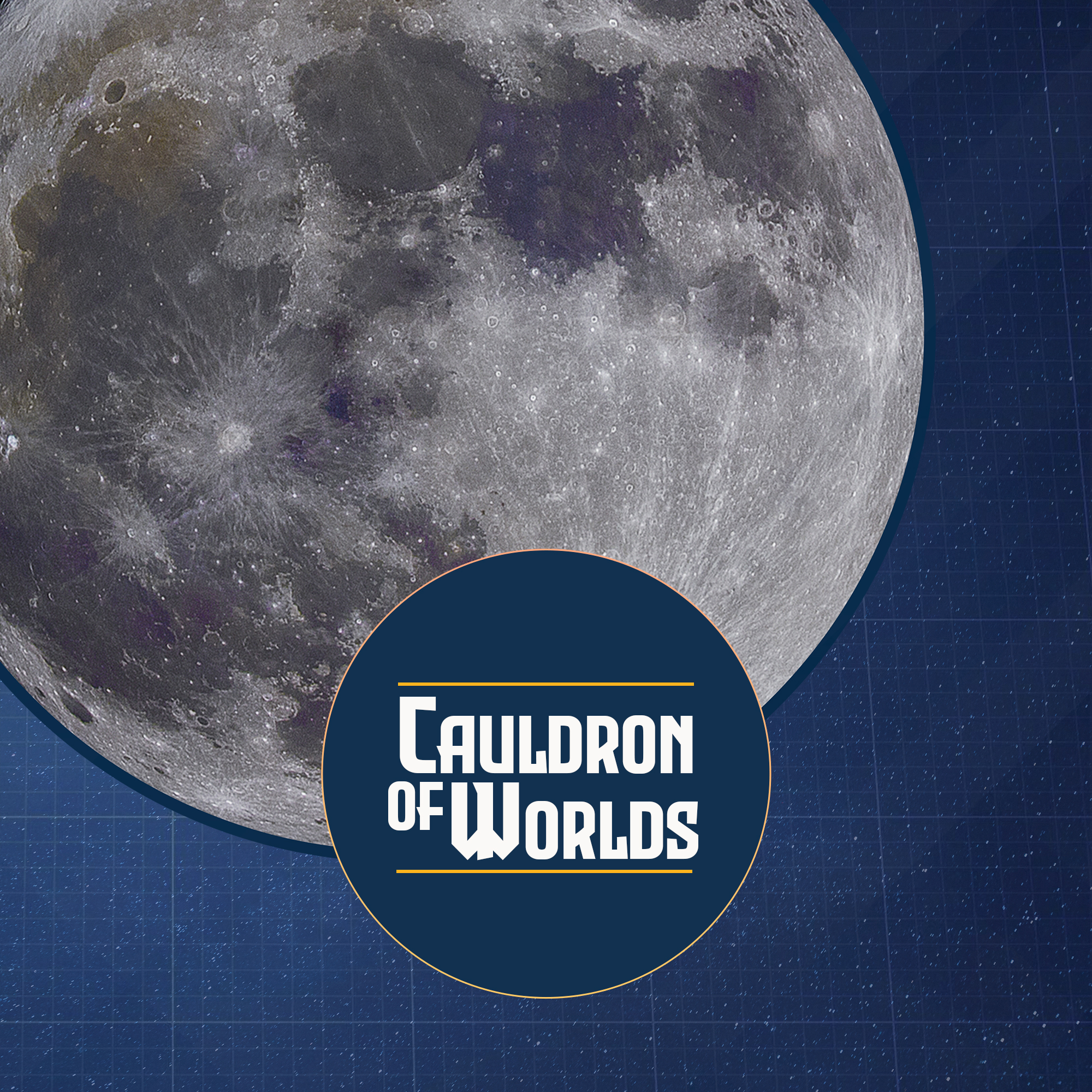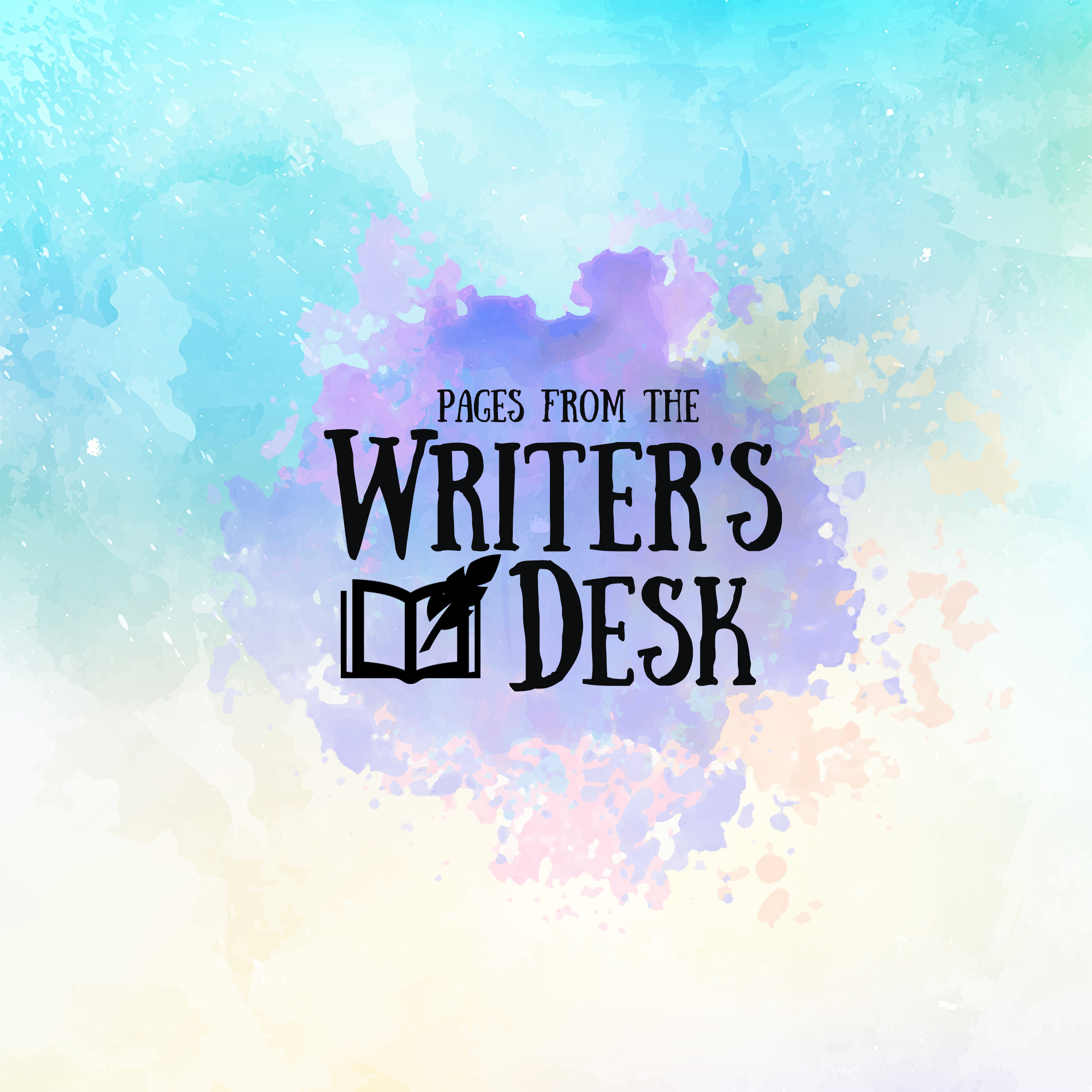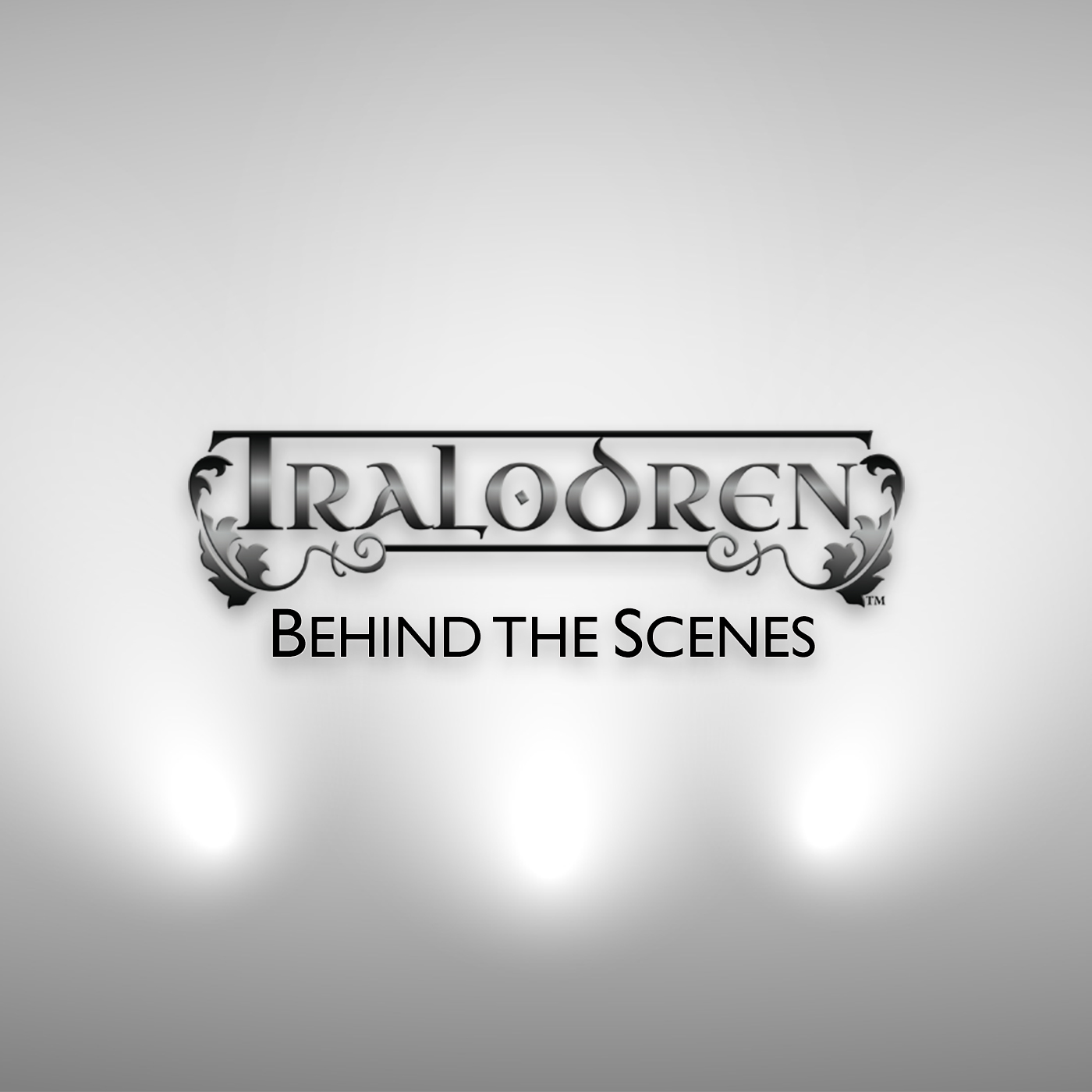GRAPHIC NOVELS
INKING
THE WRITER’S DESK © Chad Corrie
In this essay we’re going to keep moving forward in explaining the creation of graphic novels by delving into the topic of inking. Now inking is something that is interesting in that you’re asking this new artist to come and draw over the work of another artist who has visually interpreted what you wrote. Inking is also a strange thing in that sometimes it can make okay artwork look better or can take great looking art and make it look not so good. But first, let’s cover what inking is all about.
Inking is the process wherein an artist takes a brush, pens, or other related implements and uses them to draw or trace over the pencil work that was done for the page. The idea behind this concept is that you need a clear, concise and crisp line that will copy and/or print well. Back in the day when comics were created pencil did not print well and so they had to darken and clean up the lines to make them crisp and clear enough to print. This also helped prepare the work for coloring if that was what was needed down the line. As the times moved on inking stayed the same even though in the changing world we live in there are some who are looking to bypass this step all together (more on this later).
So that, in a nutshell is inking. Now that we have an understanding of its place let’s look at the various ways it can be done and some of the pros and cons tied to it.
Traditional “Old School” Inking
Below is an image of traditional inking done for Sons of Ashgard: Ill Met in Elmgard. In this case Matt Wendt, the artist for the book was both penciler and inker. As such he took the pencils and then inked right over them, erasing the pencil afterward to leave just the clean ink lines. Now this is a great example of inking as it closely matches the original pencil and helps to improve the artwork by making each figure stand apart from the other, reveals more texture on outfits, bodies, and the terrain around them. You can also notice how things just seem cleaner and more concise over all, helping you get a solid idea of what the image is upon first glance.
However, like all traditional inking because you have to erase the pencil underneath you forever lose the pencils so should something not go right in the inking process it can be harder to fix.
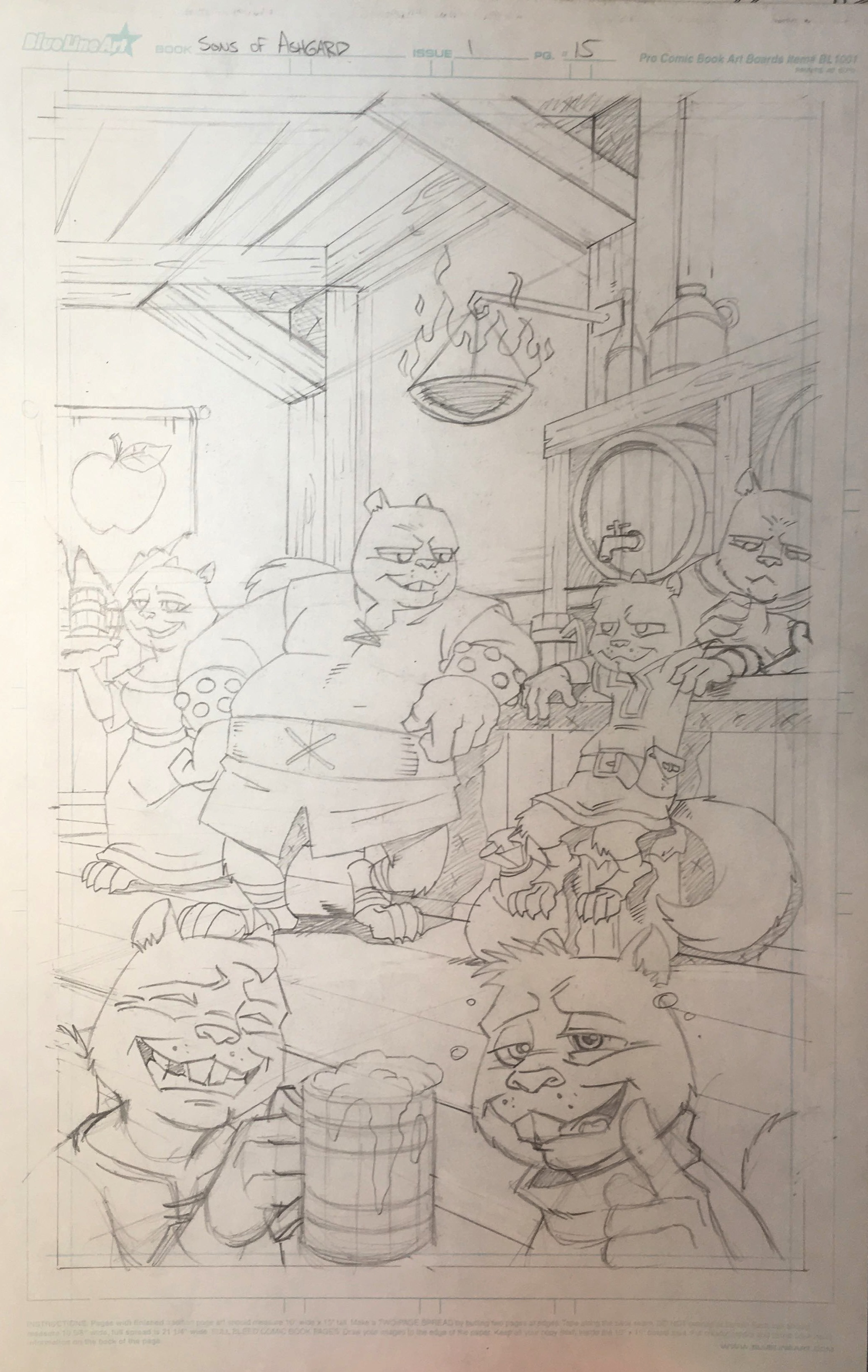
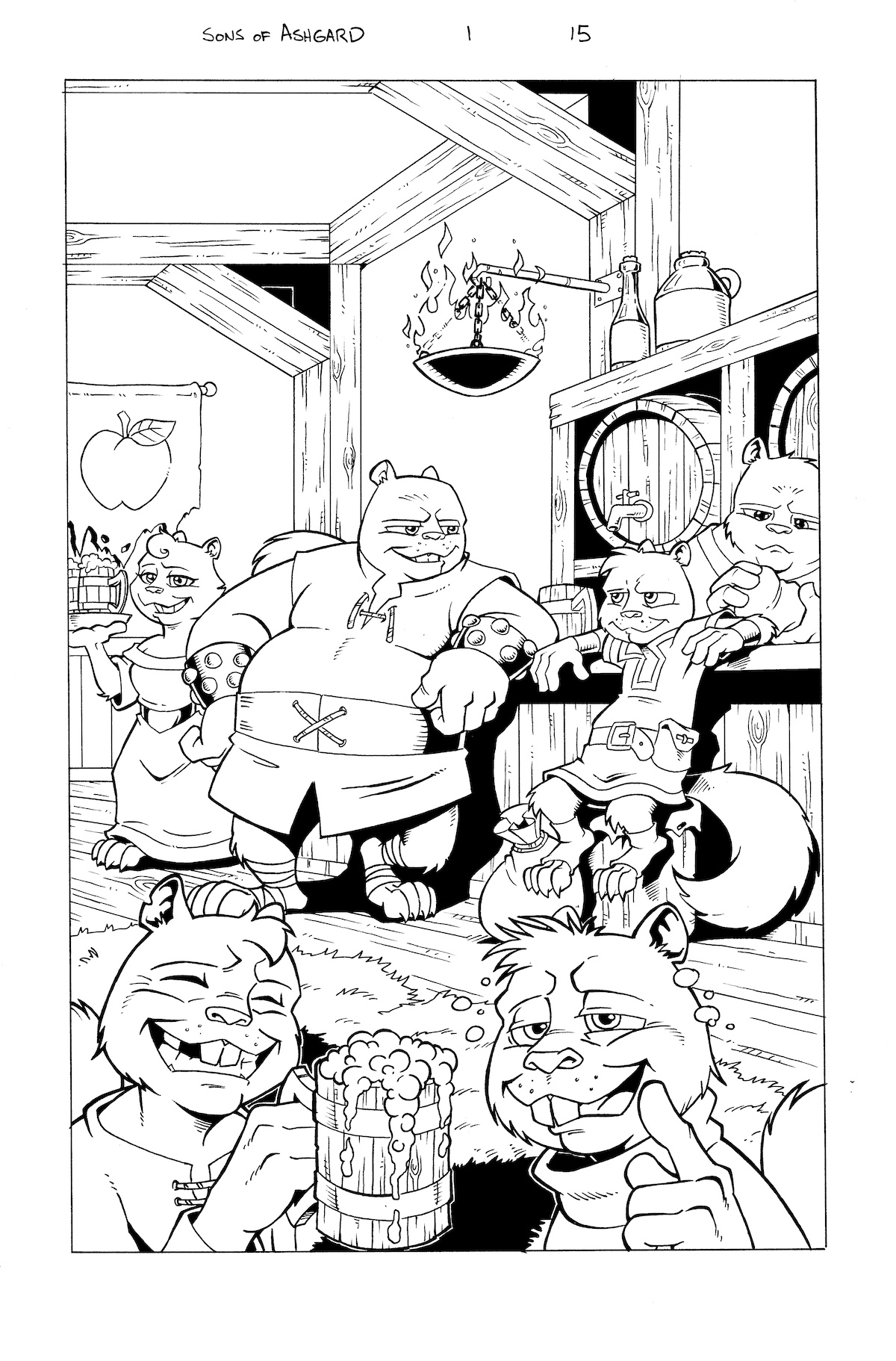
Digital Inking
Digital inking is something that looks to have its cake and eat it too when it comes to getting a copy of your pencils and then your finished inking.
As you can see in the example below, by Tonci Zonjic, the work was scanned into the computer and by using Photoshop they were able to have the line weights changed, the pencil erasures cleaned up and a collection of other corrections to make it look smooth, clean, and concise.
The benifit of this option is you get to keep your penciled image, but now you have a file on your computer that takes up space and could be lost if you have a crash or something else bad happens to it.
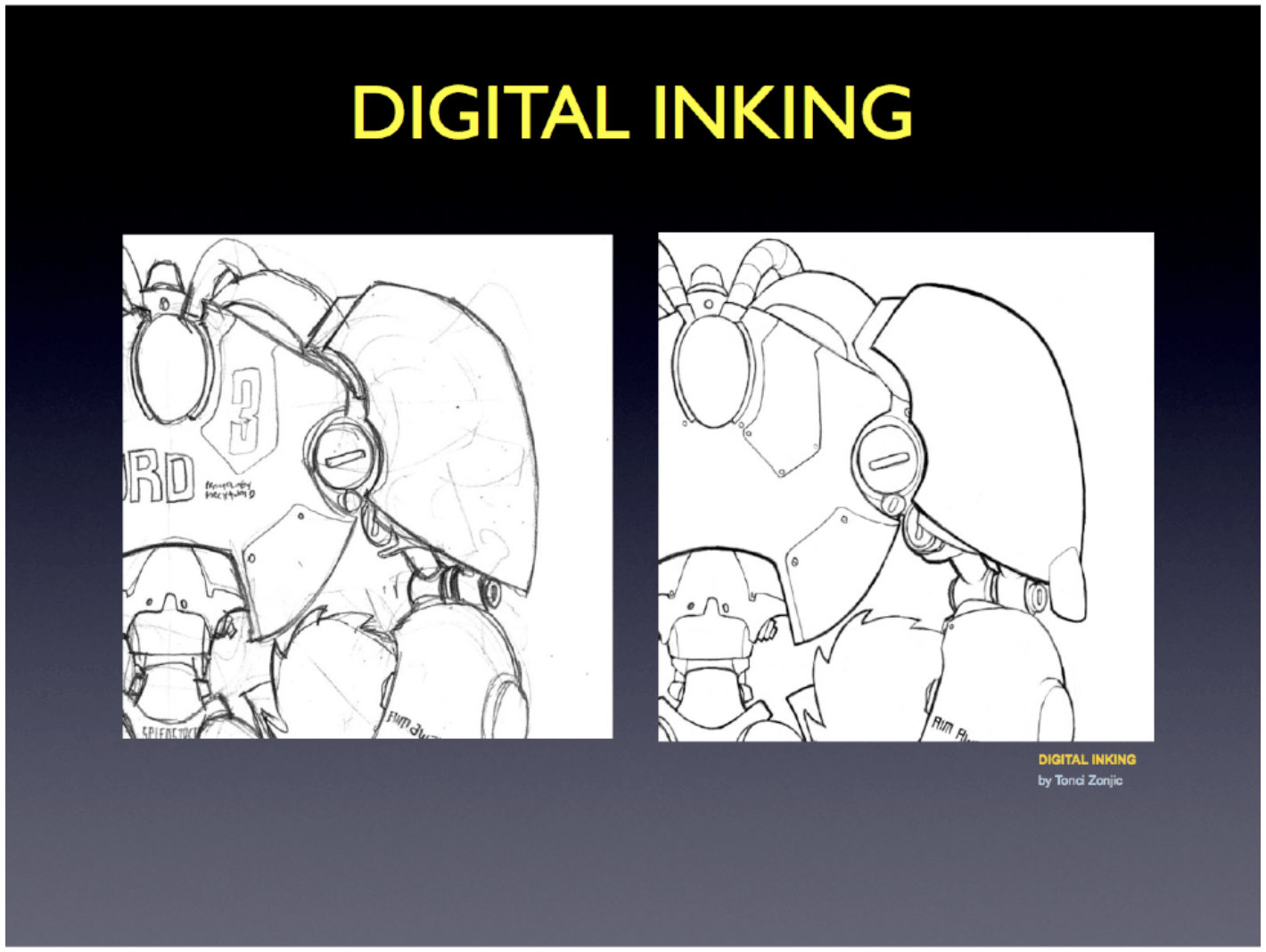
No Inking
This option is becoming popular in some circles because it saves time and money, two things that just about everyone enjoys saving. The idea is to take pencils that are finished, that is pencils that are clear and sharp enough on their own to work as final artwork (or often digital pencil work), and move right over them into coloration. As you can see from the example below the penciled page was colored over digitally without any inking in between. It does make for a different looking page in general but still can work for a finished page over all.
So that is a brief look at inking. For more information on this topic you can check out The DC Comics Guide to Inking Comics. In the next essay we’ll talk some about color.
